Manly then had the several parts of it, which he deemed hopeful, transported to Washington, and there at the Smithsonian Institution he labored and experimented until he evolved a light and powerful gasoline motor.In October, 1903, the test was made, with Manly aboard of the machine.The failure which resulted was due solely to the clumsy launching apparatus.The airplane was damaged as it rushed forward before beginning to soar; and, as it rose, it turned over and plunged into the river.The loyal and enthusiastic Manly, who was fortunately a good diver and swimmer, hastily dried himself and gave out a reassuring statement to the representatives of the press and to the officers of the Board of Ordnance gathered to witness the flight.
A second failure in December convinced spectators that man was never intended to fly.The newspapers let loose such a storm of ridicule upon Langley and his machine, with charges as to the waste of public funds, that the Government refused to assist him further.Langley, at that time sixty-nine years of age, took this defeat so keenly to heart that it hastened his death, which occurred three years later."Failure in the aerodrome itself," he wrote, "or its engines there has been none; and it is believed that it is at the moment of success, and when the engineering problems have been solved, that a lack of means has prevented a continuance of the work."It was truly "at the moment of success" that Langley's work was stopped.On December 17, 1903, the Wright brothers made the first successful experiment in which a machine carrying a man rose by its own power, flew naturally and at even speed, and descended without damage.These brothers, Wilbur and Orville, who at last opened the long besieged lanes of the air, were born in Dayton, Ohio.Their father, a clergyman and later a bishop, spent his leisure in scientific reading and in the invention of a typewriter which, however, he never perfected.He inspired an interest in scientific principles in his boys' minds by giving them toys which would stimulate their curiosity.One of these toys was a helicopter, or Cayley's Top, which would rise and flutter awhile in the air.
After several helicopters of their own, the brothers made original models of kites, and Orville, the younger, attained an exceptional skill in flying them.Presently Orville and Wilbur were making their own bicycles and astonishing their neighbors by public appearances on a specially designed tandem.The first accounts which they read of experiments with flying machines turned their inventive genius into the new field.In particular the newspaper accounts at that time of Otto Lilienthal's exhibitions with his glider stirred their interest and set them on to search the libraries for literature on the subject of flying.As they read of the work of Langley and others they concluded that the secret of flying could not be mastered theoretically in a laboratory; it must be learned in the air.It struck these young men, trained by necessity to count pennies at their full value, as "wasteful extravagance" to mount delicate and costly machinery on wings which no one knew how to manage.
They turned from the records of other inventors' models to study the one perfect model, the bird.Said Wilbur Wright, speaking before the Society of Western Engineers, at Chicago:
"The bird's wings are undoubtedly very well designed indeed, but it is not any extraordinary efficiency that strikes with astonishment, but rather the marvelous skill with which they are used.It is true that I have seen birds perform soaring feats of almost incredible nature in positions where it was not possible to measure the speed and trend of the wind, but whenever it was possible to determine by actual measurements the conditions under which the soaring was performed it was easy to account for it on the basis of the results obtained with artificial wings.The soaring problem is apparently not so much one of better wings as of better operators."** Cited in Turner, "The Romance of Aeronautics".
When the Wrights determined to fly, two problems which had beset earlier experimenters had been partially solved.Experience had brought out certain facts regarding the wings; and invention had supplied an engine.But the laws governing the balancing and steering of the machine were unknown.The way of a man in the air had yet to be discovered.
The starting point of their theory of flight seems to have been that man was endowed with an intelligence at least equal to that of the bird; and, that with practice he could learn to balance himself in the air as naturally and instinctively as on the ground.He must and could be, like the bird, the controlling intelligence of his machine.To quote Wilbur Wright again:
"It seemed to us that the main reason why the problem had remained so long unsolved was that no one had been able to obtain any adequate practice.Lilienthal in five years of time had spent only five hours in actual gliding through the air.The wonder was not that he had done so little but that he had accomplished so much.It would not be considered at all safe for a bicycle rider to attempt to ride through a crowded city street after only five hours' practice spread out in bits of ten seconds each over a period of five years, yet Lilienthal with his brief practice was remarkably successful in meeting the fluctuations and eddies of wind gusts.We thought that if some method could be found by which it would be possible to practice by the hour instead of by the second, there would be a hope of advancing the solution of a very difficult problem."The brothers found that winds of the velocity they desired for their experiments were common on the coast of North Carolina.















